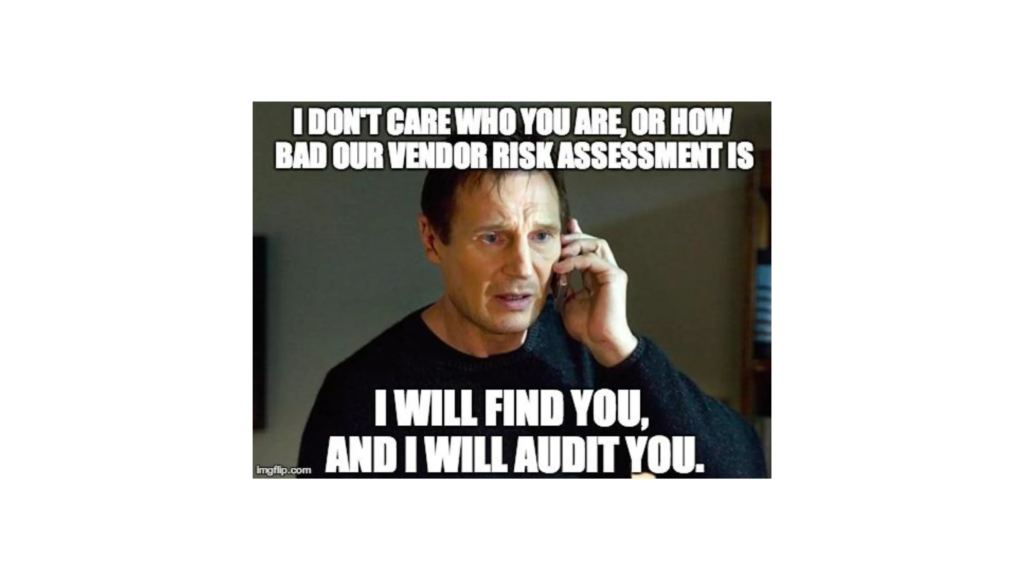Learn the essentials of South Africa's POPIA, its impact on data protection, and how it compares to global privacy laws.
Vendor Security Assessment (VSA)
So you’re in charge of managing third-party vendors and want to make sure their security practices are up to snuff. Conducting a vendor security assessment, or VSA, is a great way to gain visibility into vendors’ security controls and ensure they meet your company’s requirements.
What Is Vendor Security Assessment (VSA)?
A Vendor Security Assessment (VSA) evaluates how well a company manages security risks related to third-party vendors. It examines the policies, procedures and controls in place to ensure vendors properly handle sensitive data and systems.
As companies increasingly outsource business functions to vendors, it’s crucial to make sure any third parties with access to your data, networks or applications meet your security standards. A VSA helps identify weaknesses in the vendor risk management process so you can strengthen oversight and reduce vulnerabilities.
During an assessment, auditors review details like:
- How vendors are evaluated and selected based on security criteria.
- Contract terms that address security requirements, access controls and data handling.
- Ongoing monitoring of vendor security compliance and performance.
- Plans to manage issues like unauthorized access, data breaches or service disruptions caused by vendors.
A VSA gives you an expert view of vendor-related threats and how to mitigate them. It’s a proactive way to avoid the damage caused by a vendor security incident, whether due to malice, negligence or simple human error.
Peace of mind that vendors won’t put your systems or data at risk is worth the investment in a comprehensive VSA. It’s one of the best tools for managing third-party security in today’s highly connected business world.

The Importance of Conducting VSAs for Third Party Vendors
Conducting regular Vendor Security Assessments (VSAs) of your third-party vendors is critical. Why? Because any weak link in your supply chain can expose your organization to cyber threats.
Protect Sensitive Data
VSAs help ensure your vendors have adequate security controls in place to protect any sensitive data they handle on your behalf. Things like customer information, intellectual property, or financial records. If that data was breached due to a vendor’s poor security, it could damage your reputation.
Mitigate Risk
VSAs uncover vulnerabilities in a vendor’s systems, software, policies, and procedures before they can be exploited. By identifying and remediating risks early on, you reduce the chance of a vendor-related data breach or service disruption down the road.
Stay Compliant
In many industries, conducting regular risk assessments of third-party vendors is required to meet compliance standards. VSAs provide an auditable record showing you’ve done your due diligence in evaluating vendor security.
Build Trust
VSAs demonstrate to customers, partners, and regulators that you take supply chain security seriously. When vendors know you will be evaluating their security controls and procedures, it also encourages them to make continual improvements to meet your standards. This builds a trusted, transparent relationship between your organizations.
In summary, VSAs are a must to manage risk, ensure compliance, protect data, and build trusted partnerships with vendors. Make them a part of your overall information security strategy.
How to Create an Effective Vendor Security Assessment Program and Questionnaire
Creating an effective vendor security assessment program and questionnaire is crucial to managing risk from third-party vendors. Here are some steps to build a solid program:
Define Your Goals
First, determine what you want to achieve with the program. Do you want to evaluate vendors before contracting them or monitor existing vendors? Identify resources, roles and responsibilities. Get executive buy-in and support to give the program authority.
Develop Assessment Criteria
Work with stakeholders to decide what controls and metrics you’ll evaluate vendors against. Consider factors like data privacy, access control, and security training. Refer to industry standards to help determine key criteria. Keep the scope broad enough to cover all vendor types.
Create the Questionnaire
Draft questions that will provide insight into the vendor’s security posture and compliance with your criteria. Ask about policies, procedures, technologies used and auditing practices. Include open-ended questions to allow vendors to elaborate on their responses. Have both technical and non-technical people review the questions.
Remediate Issues
For existing vendors, work with them to remediate any inadequate security practices identified through the assessment within a defined timeline. Provide guidance on how to improve to meet your standards. For new vendors, use the assessment results to determine if you want to proceed to contracting with them or if additional negotiation is needed first. Continuously monitor vendors even after the initial assessment. Conduct periodic re-evaluations and audits, especially if there are major changes with the vendor or if an incident occurs. Update your program regularly based on new threats, technologies or business requirements.
Understanding these concepts will help you better evaluate the security of any third-party vendors you work with. At the end of the day, it’s all about managing risk – the risk of data breaches, cyber threats, and vulnerabilities that could impact your organization. By requiring vendors to undergo assessments, you’re doing your due diligence to minimize those risks. Staying on top of the latest standards and keeping vendors accountable is well worth the effort for safeguarding sensitive data and systems.







